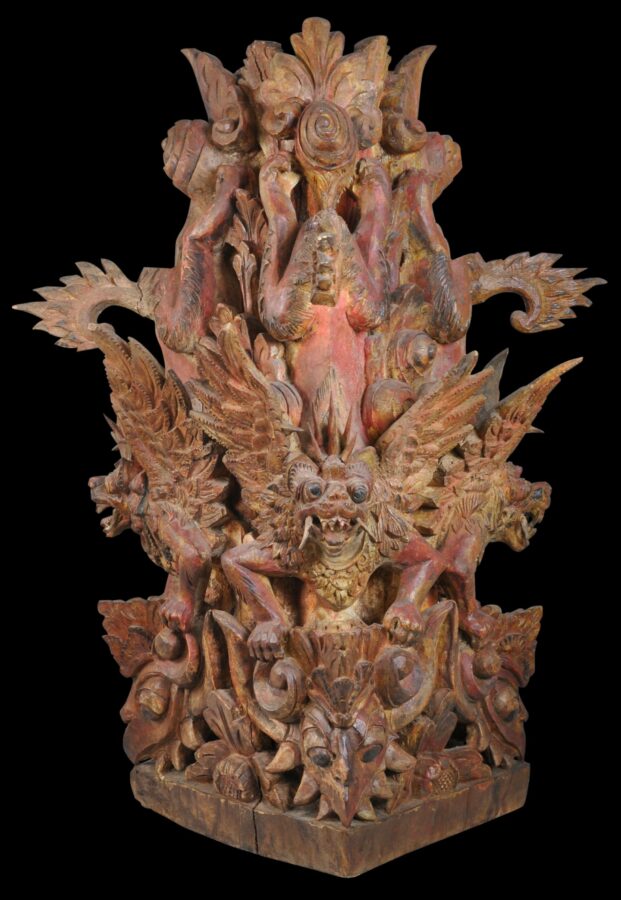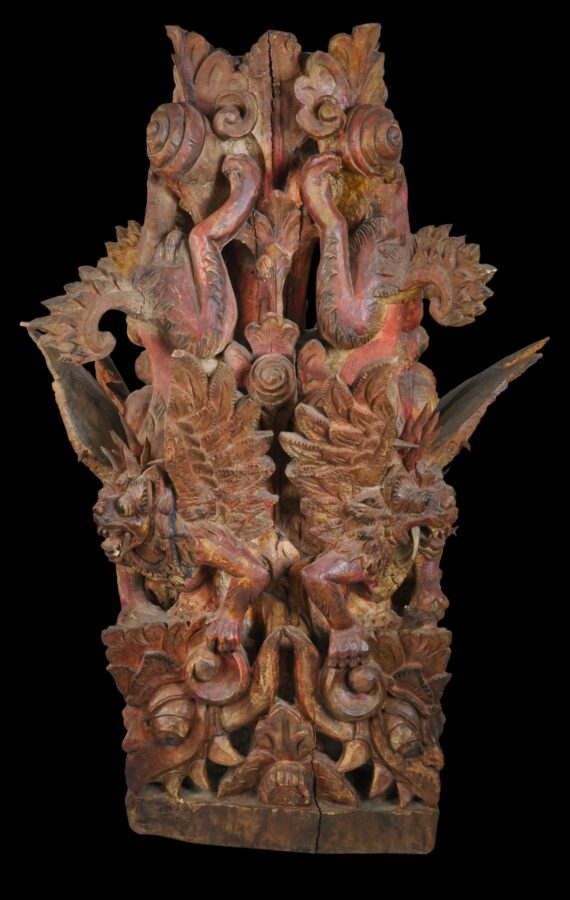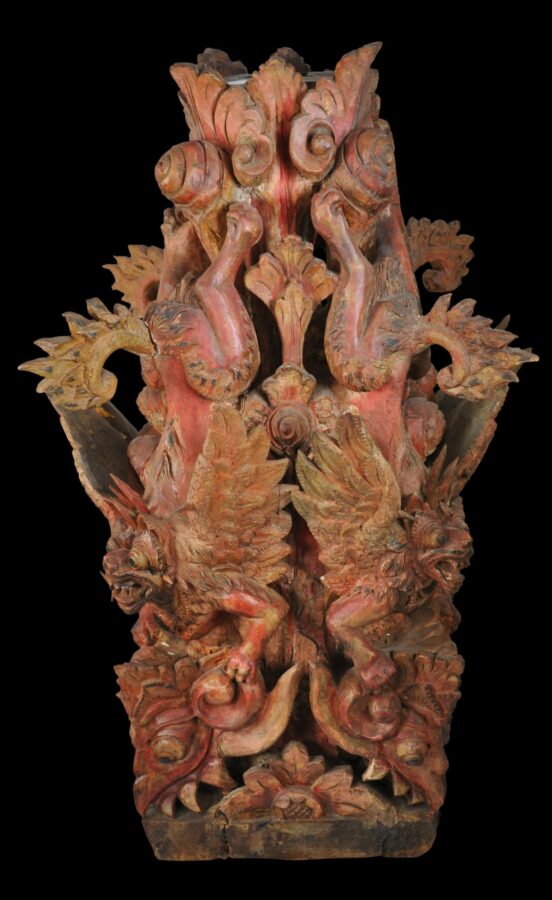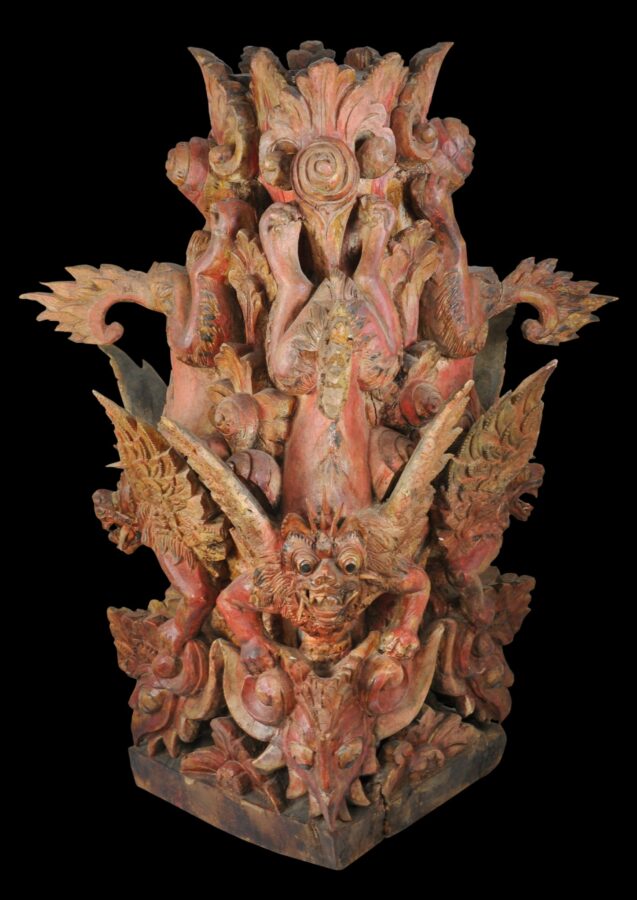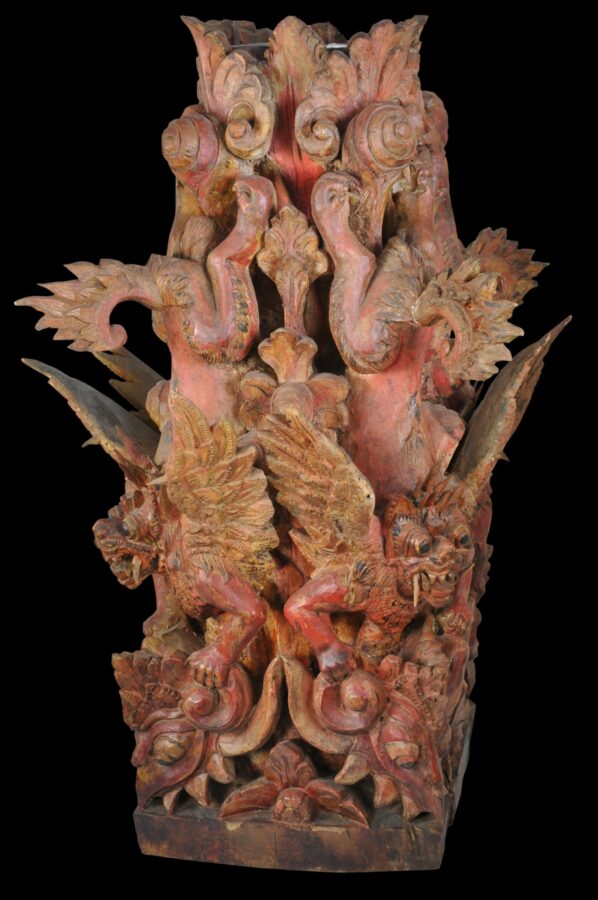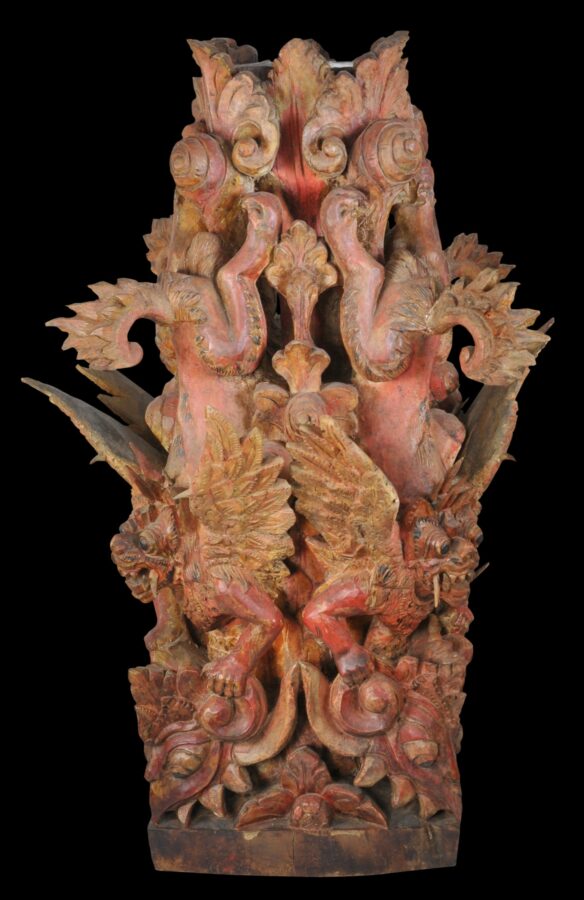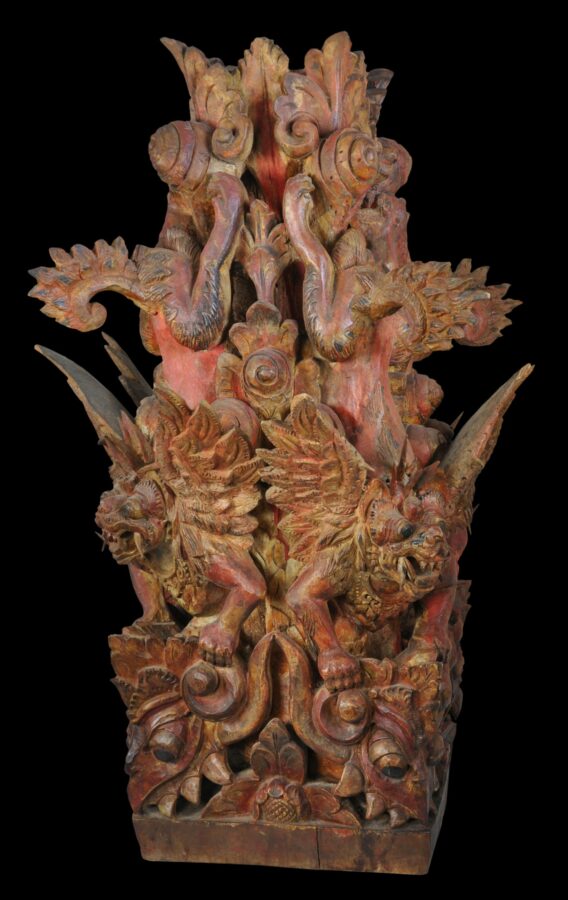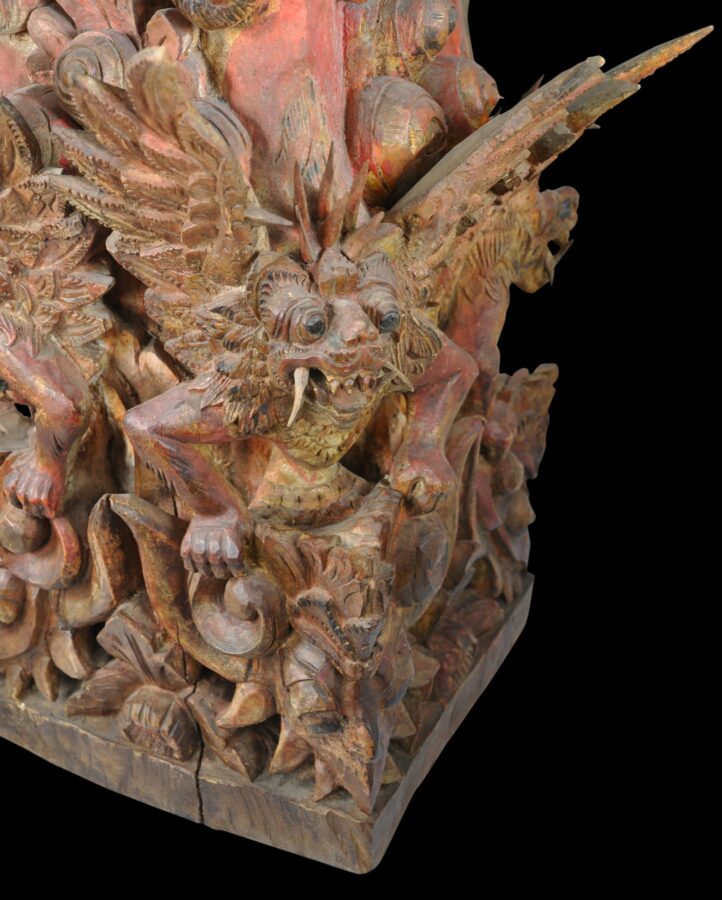This stunning, well-carved wooden block from the Hindu island of Bali in Indonesia would have served as a pillar base (sendi tugeh) at an entrance of an open-walled pavilion, most probably in a temple compound.
Of much sculptural beauty, it has a tapering form. It has been carved as four full-length, winged, fanged lions (singa bersayap), with their lithe bodies cascading down the block and with curved tails (carved separately and applied) flying off the block as they descend to paw away at four karang asti heads. The lions are also notable for the way in which their fangs protrude from their gaping mouths (minor defficiencies). Spaces between the figures are filled with carved leaves and flowers.
The composition is particularly striking and complex, and has been decorated with red, black and yellow ochres, with traces of gold highlights.
A cavity is in the centre of the support to allow the post to be inserted.
See Ramseyer (1977, fig. 97 & 98) for related sendi tugeh with similar karang motifs.
The example here has a superb patina consistent with considerable age and losses are minor. It is sculptural and highly decorative, and among the most complex in terms of its detail and composition that we have seen.
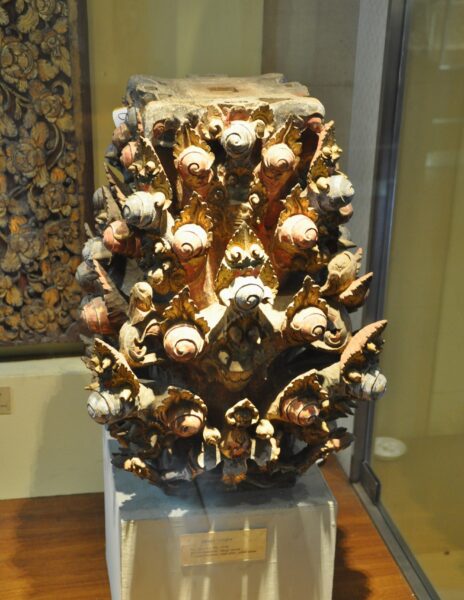
Above: A related sendi tugeh displayed in the Bali Museum, Denpasar, Bali, Indonesia.
Scroll down for more images.
References
Maxwell, R. et al, Bali: Island of the Gods, National Gallery of Australia, 2014.
Ramseyer, U., The Art and Culture of Bali, Oxford University Press, 1977.


